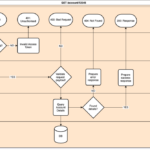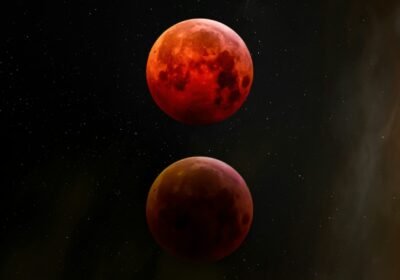Biggest Solar Storm in 50 Years Has Hit The Earth
The most powerful solar storm in the last two decades recently hit Earth, creating stunning displays of the Northern and Southern Lights. The event was caused by a group of sunspots that are 16 times the size of Earth. Several X-class solar flares and coronal mass ejections were released directly toward our planet. The most intense storms since the 2003 Halloween storms were caused by these solar emissions. As far south as Florida and Mexico, the Southern Lights can be seen. Technology in space and on Earth has been affected by the recent solar storms. The Starlink satellite service was experiencing issues due to the storm. He wrote on the social platform X that its satellites were under a lot of pressure, but holding up so far. The storms disrupted power grids, and high-frequency communications in some areas. Sun’s 11-year cycle might arrive earlier than anticipated. We can expect more storms in the coming months as the Sun’s magnetic field flips. While these storms could provide more spectacular displays, they could also disrupt radio and electrical infrastructure. What happened on the surface of the Sun that caused the storm? How did it create a stunning display of light one million km away? Finally, and most importantly, what will happen when the sunspot group faces our planet again after two weeks? There is a reason. The sunspot group is behind the recent solar storm. Sunspots are dark areas on the Sun’s surface that are cooler than the surrounding areas. The temperature
In the center of a sunspot is between 3000 and 4500 kelvin, which is cooler than the surrounding area’s temperature. The cluster was in view of Earth a few days ago. It looked normal at that time. It grew quickly to become as wide as our planet. It was one of the largest sunspots of the current solar cycle. The space weather is provided by the National Oceanographic and Atmospheric Administration. At the beginning of the month, the Prediction Center issued warnings of increased solar flare risk. The patch on the Sun lived up to its expectations, emitting 75 M-class flares and 10 X-class flares within a week. Light emitted from these flares reaches our planet in 8. 20 seconds and minutes. B-class is the smallest, followed by C, M, and then X, the most significant. The strength of the scales is determined by a factor of 10. Flares are generally too weak to affect Earth, but M-class flares do. There is an immense cloud of magnetized particles thrown into it. There is space from the Sun. When the Sun’s magnetic fields realign, these eruptions occur. It can take up to three days for a CME to reach Earth. When a CME interacts with Earth’s magnetic fields, it can create currents that drive particles toward Earth. Solar flares manifest as bright flashes of light, while CMEs appear as enormous clouds of magnetized particles moving through space. The solar activity began to escalate on May 3 with the observation of an
X 1.6 solar flare. Two more X-class flares were detected within 48 hours. On the following day, the sunspot region emitted an even larger X 4.5 flare, unleashing tremendous energy. The first mass ejection from the Sun was observed on May 6. On May 8, there was another M 8.6 flare. Then. There were two more X-class flares on May 9. Four CMEs were traveling towards Earth by May 10. Scientists believe the last three CMEs combined into a single large event, known as a cannibal CME, due to their varying speeds. Something interesting happens when a CME reaches Earth. The Earth has a magnetic field. The gas flows down the day side of the pole because of the magnetic fields. This results in the sun setting. The rubber band on the magnetic field breaks. On the night side, gas from the solar storm streams along the magnetic lines toward the poles. Auroras are often thought of as green, but they can light up the sky with huge red glows. Blue and purple Auroras are seen when solar particles interact with nitrogen up to 100 km away. The particles interact with oxygen at altitudes between 100 and 300 kilometers or about 62 to 186 miles. However, the. During intense solar storms when these interactions happen with oxygen at higher altitudes, we sometimes see striking red auroras. Our electrical power grids and satellite infrastructure can be impacted bymagnetic storms. During a storm, GICs can flow through power transmission lines and cause
Transformers to become saturated. Transformer fail, protective equipment can trip, transmission lines could overload, and generators could fail. It was damaged. In severe cases, these issues can lead to large-scale power failures. In 1989 in Quebec, Canada, a geomagnetic storm left 6 million people without power for nine hours. Next two weeks. There is a chance that it will reappear and face Earth again in two weeks. This activity indicates that the cycle of activity isn’t over yet, as it suggests that there could still be more solar flares in the future. There is no ordinary sunspot. . It’s so big that it can be seen from Earth without magnification. The storm associated with the Carrington event caused sparking and fires in telegraph stations as far south as the Caribbean and Mexico. The telegraph system was the most advanced electrical technology of the 19th century. It makes us more vulnerable to the effects of significant solar activity, like sunspots. The increased reliance on electricity and emerging technology in today’s society means that any disruption could lead to trillions of dollars in monetary losses and pose risks to life dependent on these systems. The impact of a Carrington-class event today is estimated to result in damages ranging from $0.6 to $2.6 trillion in the U.S. alone. It is crucial to recognize the threat posed by extreme solar storms and take proactive measures to protect our technology. The potential destruction of such events is against the infrastructure. The solar storms we experienced
In May 2024 suggest that the solar maximum, along with the flip in the Sun’s magnetic field, may occur sooner than anticipated. If you learn new things from this, please don’t like it and to our channel for more updates. See you in the next one.








